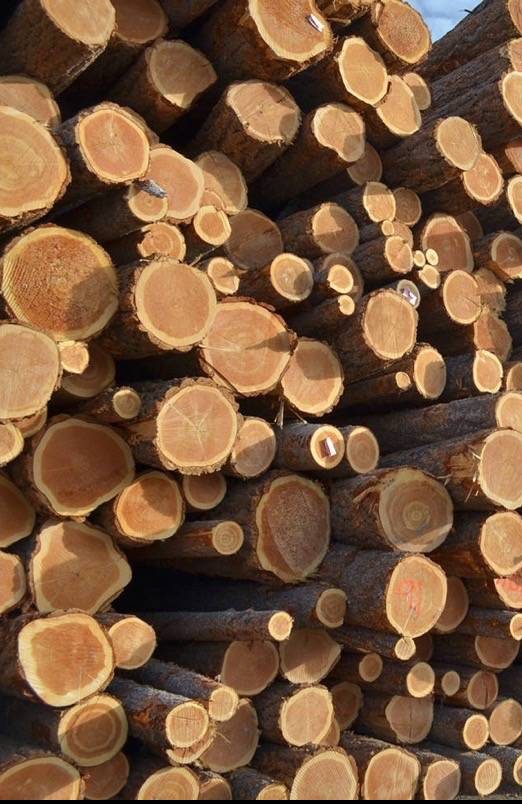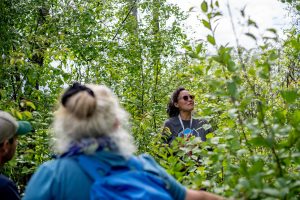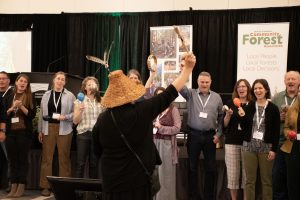Managing for community values
A community forest is a forestry operation managed by a local government, First Nation, or community-held organization for the benefit of the entire community. At its core, community forestry is about local control over the benefits offered by local forests.
Communities practice sustainable forestry that provides local forest employment. This innovative form of forest management generates economic, social, cultural, and environmental benefits for local communities, the province, and the environment.

FAQ
Community Forestry can be described as a forestry operation managed by a local government, First Nation or community-held organization for the benefit of the entire community. This innovative form of forest management generates economic, social, cultural and environmental benefits for local communities and for the province as a whole. At its core, community forestry is about local control over and enjoyment of the monetary and non-monetary benefits offered by local forest resources.
The foundation for the CFA program was developed by the BC government, stakeholders and academics interested in creating opportunities for greater participation by communities and First Nations in the management of local forests. This resulted in the decision to pilot a community forest program to test the viability of community-based Crown tenures in BC. In July 1998, amendments to the Forest Act came into force creating this new form of tenure. In 2004, the provincial government made changes to the Forest Act and regulations that replaced the pilot program with a 5-year probationary term, and allowed for direct awarding of Community Forest Agreements (CFA). Through the passing of 2009 amendments to the Forest Act, the 5-year probationary period was eliminated, making all existing and new community forest agreements eligible for a 25 year, replaceable licence.
Community forest agreements are held by a local government, community group, First Nation, or a partnership among these groups. Legal entities include limited partnerships, corporations, societies, co-operatives, First Nations Bands and local governments. Half of the operating CFAs are held by First Nations or are partnerships between Indigenous and non-Indigenous communities. Collectively, over 100 Indigenous and rural communities are involved in community forestry in BC. The average population of the communities involved is less than 4000 people.
Community forest organizations operate relatively small forest tenures, with an average Allowable Annual Cut (AAC) of 37,546 m3 in 2022. They range in size from 361 hectares to 160,122 hectares, with an average of 31,119 hectares.
Community Forest Agreement holders are uniquely incented to make investments in the forest resource for long-term sustainability. A community with a long-term, area-based tenure must live with the consequences of their decisions, and conversely, is motivated to invest for future benefit. For the same reason, CFA holders are managing for a range of objectives including:
- Wildfire mitigation & community protection
- Climate change mitigation and adaptation
- Enhanced forest stewardship and incremental silviculture
- Conservation of ecologically and culturally significant areas and values, including old growth forests.
The Community Forest Agreement (CFA) is an area-based licence operating on Crown land, that provides the exclusive right to harvest timber within the CFA area, and the right to manage botanical forest products. Licences are long-term, 25 years, replaceable every 10 years. The CFA tenure was developed to give local communities the opportunity to manage local forests for the benefit of those communities, in a manner consistent with locally defined objectives and values. CFAs are governed by the Forest Act and the Forest and Range Practices Act, and all other applicable statutes and regulations.
Since the development of the CFA tenure in 1998, BC has issued 62 CFAs across BC with another 3 formally in the application process. This document includes the size and annual allowable cut for each community forest Status of Community Forests in BC
Community forests are guided by a set of specific goals given by the Provincial Government for the Community Forest Program:
- Provide long-term opportunities for achieving a range of community objectives, values and priorities.
- Diversify the use of and benefits derived from the community forest agreement area.
- Provide social and economic benefits to British Columbia.
- Undertake community forestry consistent with sound principles of environmental stewardship that reflects a broad spectrum of values.
- Promote community involvement and participation.
- Promote communication and strengthen relationships between aboriginal and non-aboriginal communities and persons.
- Foster innovation.
- Advocate forest worker safety.
The benefits of community forestry vary between communities as they each identify their unique values and priorities. For example, one rural mountain community has identified water protection as their highest priority, while a First Nation community forest sees education and long-term employment of band members as their key priorities. The numerous benefits of community forestry include:
- Long-term community economic development resulting in the increased resilience of rural communities.
- Local employment in rural communities.
- Local-level decision making that leads to locally appropriate decisions and improves the incentives to consider the long-term benefits of sustainable management.
- Building new relationships between Indigenous and non-Indigenous communities. In addition to community forests where First Nations are owners or partners, many community forest organizations include First Nations representation on their boards. In many cases, First Nations are engaged in cooperative planning, share profits, have MOUs and employment contracts, and work with community forest organizations in capacity building activities like training and education.
- Increased potential to resolve conflicts over timber harvesting in watersheds and other sensitive areas.
- Protection of drinking watersheds, viewscapes, and other values that are important to communities and to local and regional economic activity.
- Enhanced opportunities for education and research. Community forests can be laboratories for testing innovative forest practices.
- Community participation in resource management leads to an improved awareness of forest management among members of the public.
- Greater opportunity to manage forests adjacent to communities to reduce the threat of wildfire and adapt to climate change.
Communities with an interest in a community forest should enquire with the local Ministry of Forests, Lands, Natural Resource Operations and Rural Development District office. With the timber harvesting landbase generally fully allocated in BC, the release of new areas for community forest opportunities is challenging.
Here is some helpful guidance based on experience:
- Meaningful engagement of local Indigenous peoples in the community forest initiative must be cultivated.
- Advocacy from local elected government reps at UBCM with the Minister is important as are letters of support from interested stakeholders, including industry.
- It is important to participate in the local Timber Supply Review and represent your interest to acquire a community forest. Once the volume is made available by the government for a community forest through the Review, communities are directly invited to apply for a community forest agreement.
The Pillars of
Community Forestry
Social
Economic
Ecological
Cultural
Community Forestry
Community Forest Agreement (CFA)
The Community Forest Agreement (CFA) is an area-based licence operating on Crown land, that provides the exclusive right to harvest timber within the CFA area, plus the right to manage botanical forest products. Licences are long-term, 25 years, replaceable every 10 years. CFAs are governed by the Forest Act and the Forest and Range Practices Act and all other applicable statutes and regulations.
CFA tenure was developed to give local communities the opportunity to manage local forests for the benefit of those communities, in a manner consistent with locally defined objectives and values.
To view the current status of the size and Annual Allowable Cut (AAC) of each community forest click here
To view the Province of BC community forest webpage click here

“One of the neat things about community forests that is totally different from the industrial model is we’re not focused on making 2×4’s. We’re focused on creating a strong community.”
Benefits of Community Forestry
Long-term community economic development resulting in the increased resiliency of rural communities.
Local employment in rural communities where the community has a vested interest in sustainable management.
Building new relationships between Indigenous and non-Indigenous communities. In addition to community forests where First Nations are owners or partners, many community forest organizations include First Nations representation on their boards. In many cases, First Nations are engaged in cooperative planning, share profits, have MOUs and employment contracts, and work with community forest organizations in capacity building activities like training and education.
Local-level decision making that leads to locally appropriate decisions and improves the incentives to consider the long-term benefits of sustainable management.
Increased potential to resolve conflicts over timber harvesting in watersheds and other sensitive areas.
Protection of drinking watersheds, viewscapes, biodiversity and other values that are important to communities.
Enhanced opportunities for education and research. Community forests can be laboratories for testing innovative forest practices.
Community participation in resource management leads to an improved awareness of forest management among members of the public.
Local Decision Making
The CFA tenure was developed to give local communities the opportunity to manage local forests for the benefit of those communities, in a manner consistent with locally defined objectives and values.
Community Forest Agreement holders are uniquely motivated to make investments in the forest resource because the tenure is long-term, area-based and managed by the community. They must live with the consequences of their decisions and so are inspired to manage the forest in ways that improve the ecological, economic and social wellbeing of their communities.
News
Contact Us
We’re ready to answer your questions about community forests and the work of the BCCFA.
Use the form below to drop us an email.




